Asian Ladybeetle, Harlequin
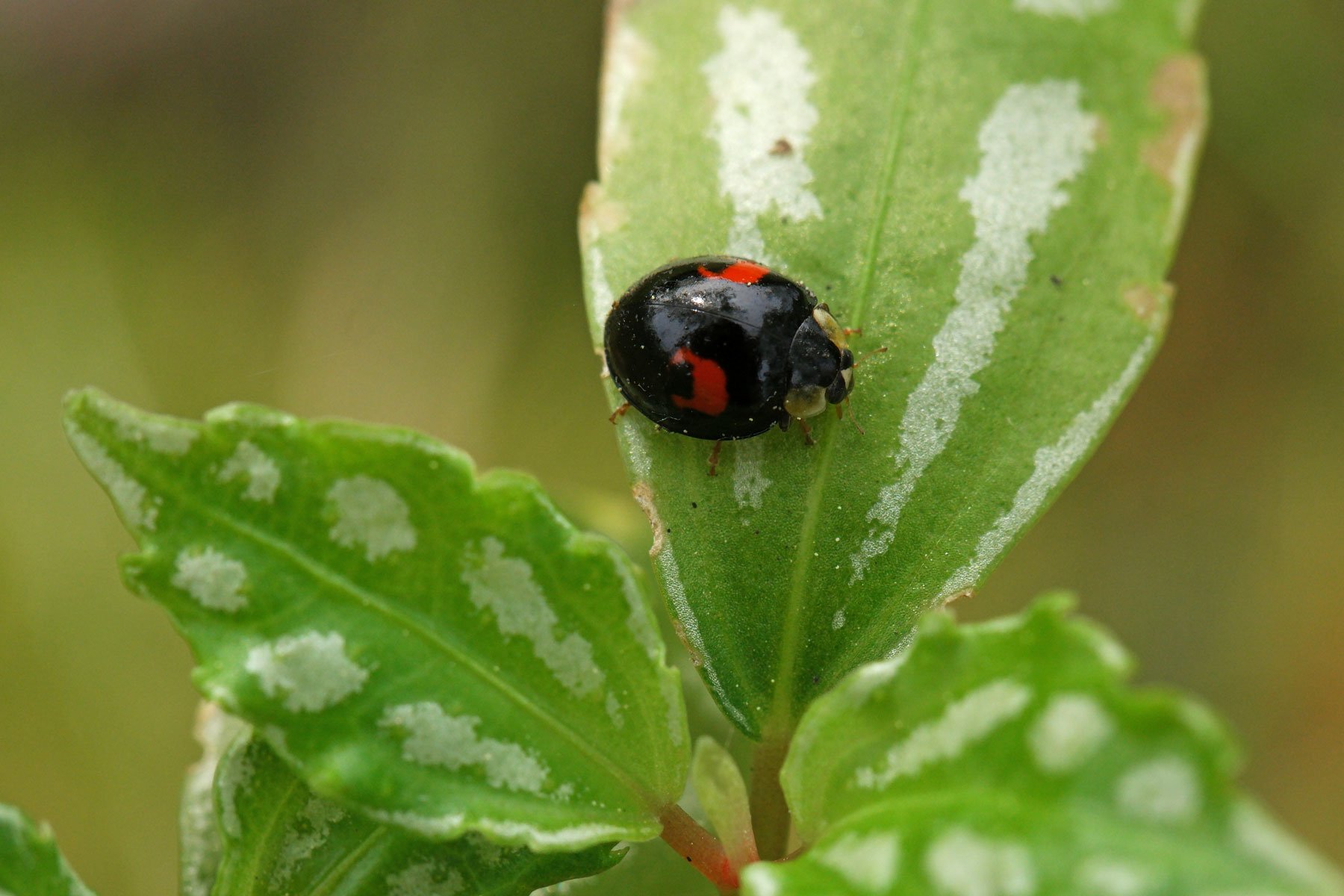
When I hear a soft ding-dong or pling-plong in my flat during a warm summer night, it is usually an Asian ladybeetle flying against the ceiling. I rarely get a visit from European ladybirds.
Harmonia axyridis, as the Asian Ladybeetle, Harlequin or Multicoloured Asian Ladybeetle is zoologically called, was introduced to Europe. For pest control, because it eats many aphids.

Unfortunately, it also seems to enjoy other small insects, such as the eggs of European ladybirds. Moreover, its reproduction rate is high and it can sire several generations per year. They gather on buildings in autumn to hibernate together.
The Asian Ladybeetle can grow up to 8 millimetres long and is variable in its appearance. The colour spectrum ranges from orange to red and black. There are beetles with plain or spotted elytra.

Harmonia axyridis is not a petting animal. If you hold it in your hand, it emits a yellow-orange defensive secretion, which looks as if it is pissing on your hand. This is also how European ladybirds and other beetle species defend themselves.
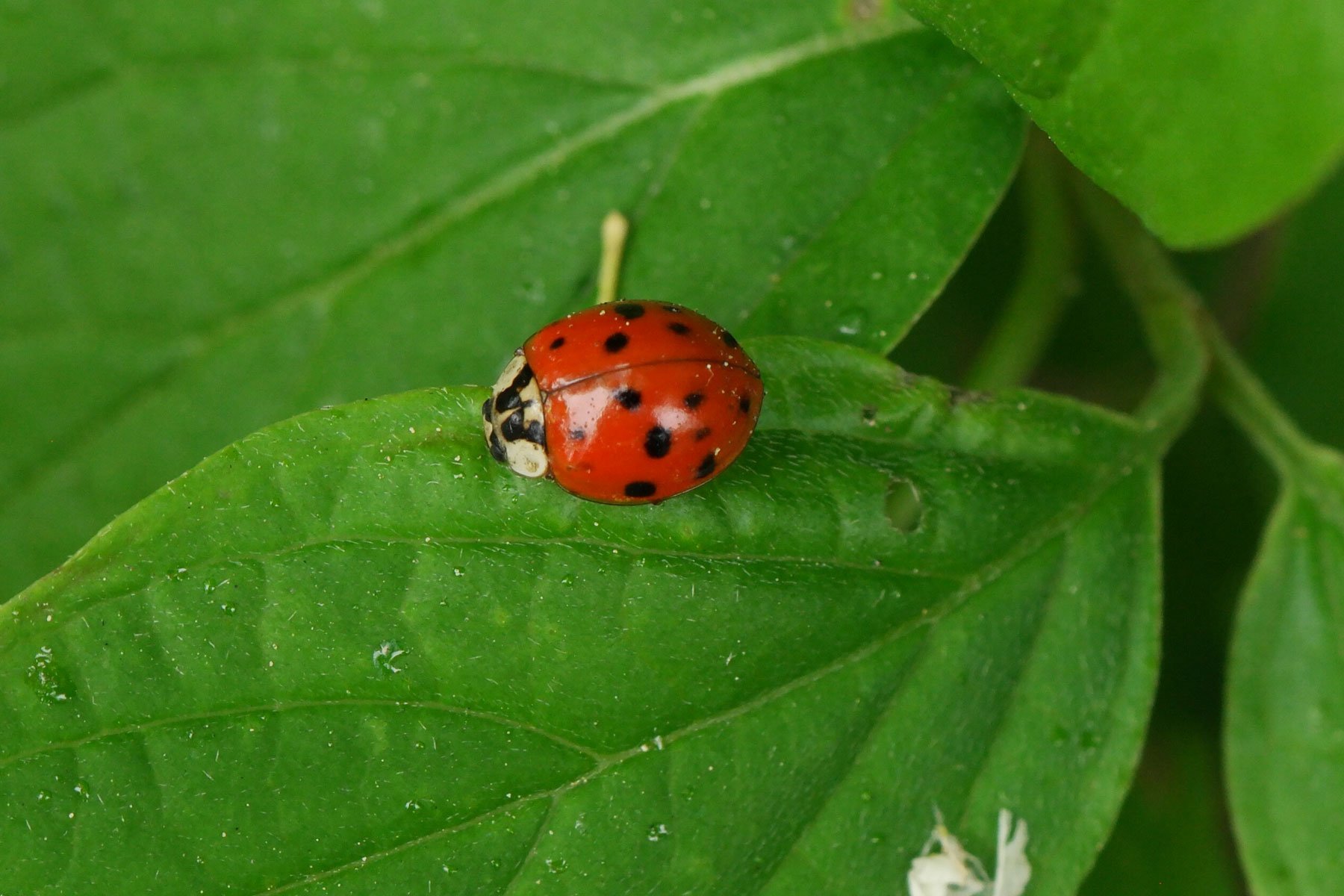

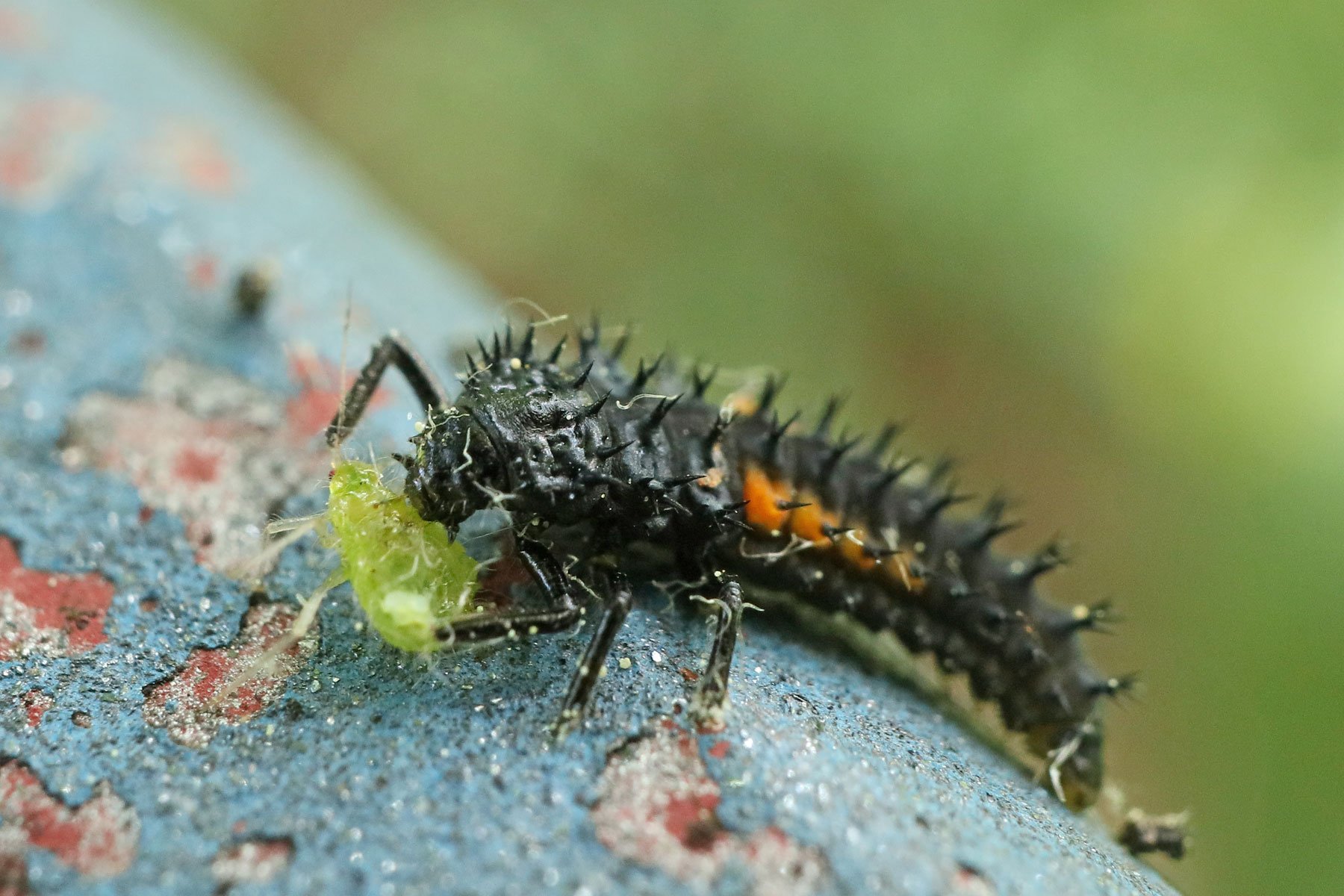
Categories: Beetles, Bugs & Cockroaches | Insects
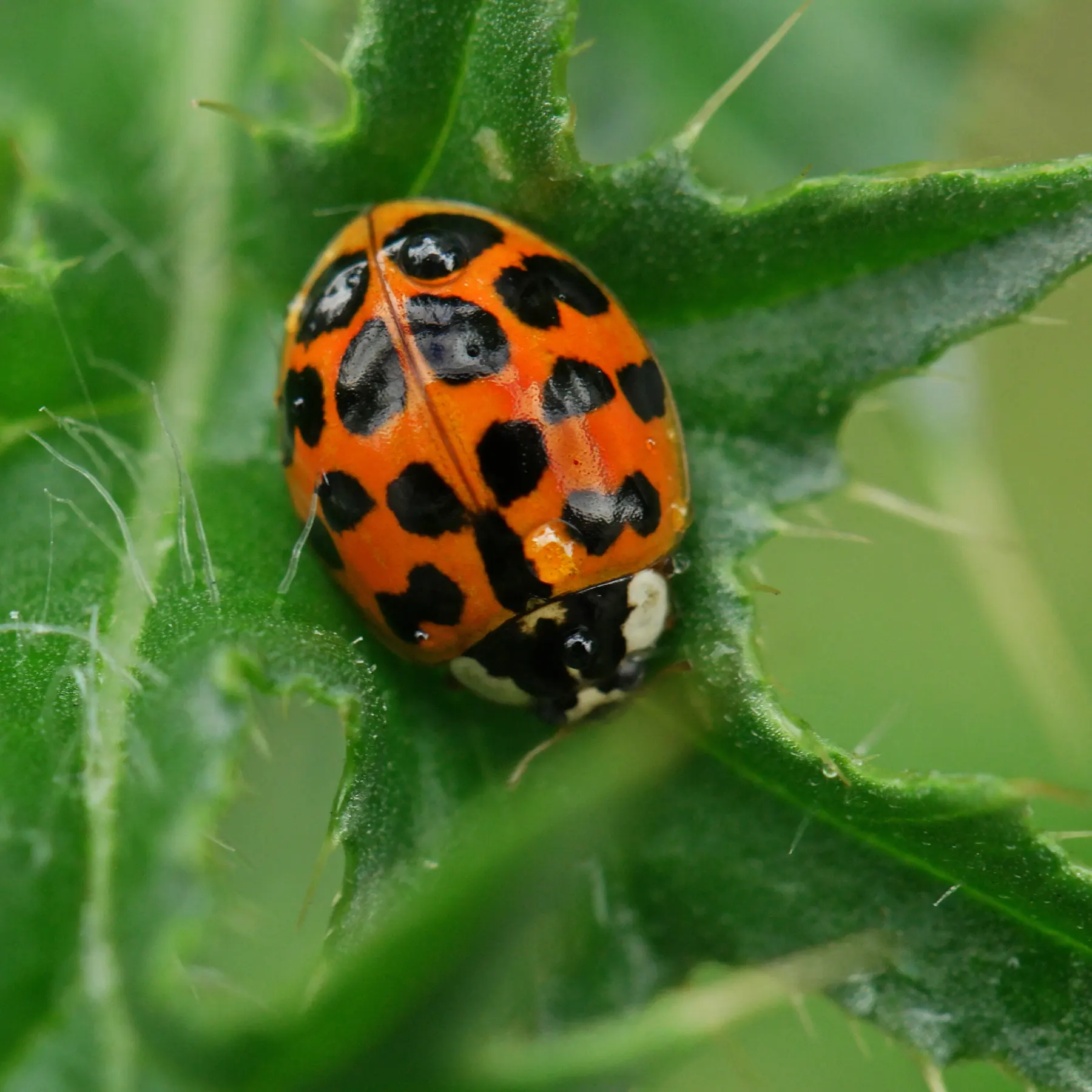
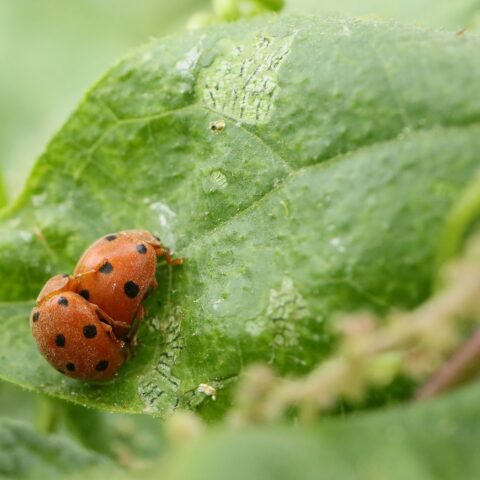 Bryony Ladybird
Bryony Ladybird Coccinella septempunctata
Coccinella septempunctata